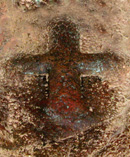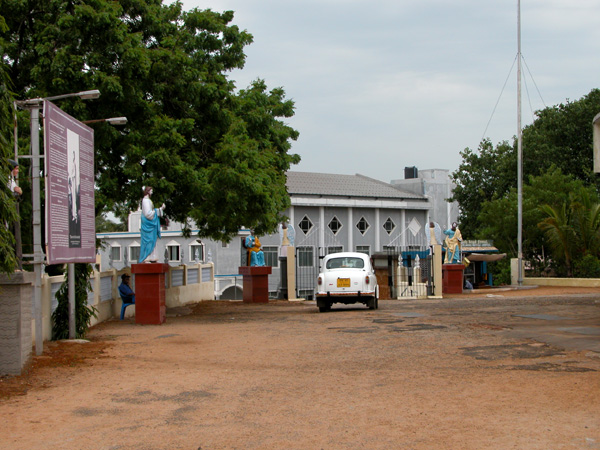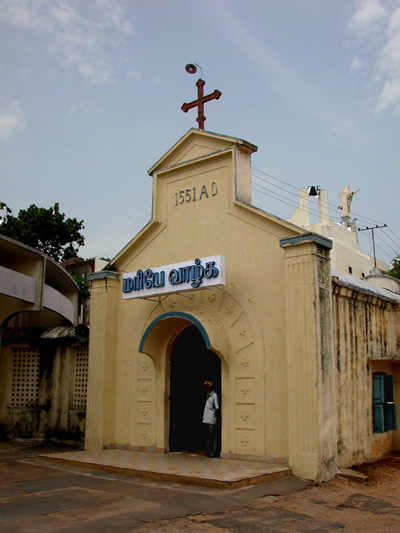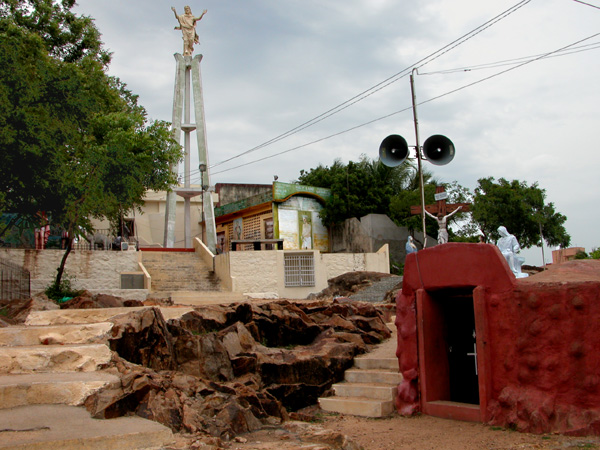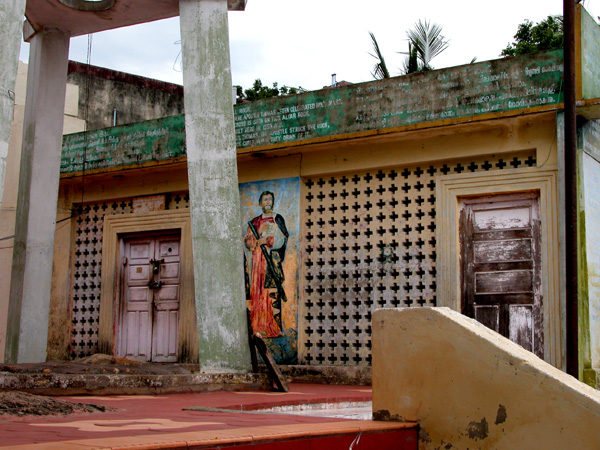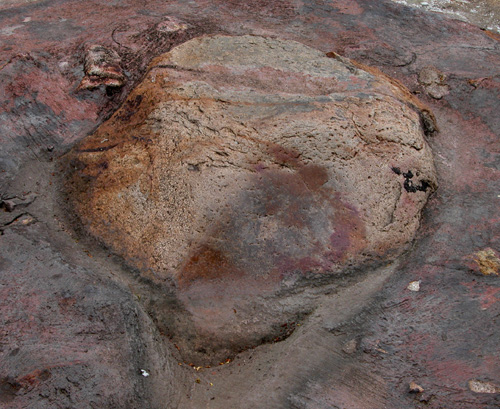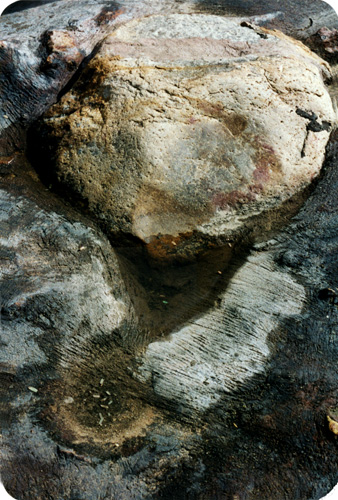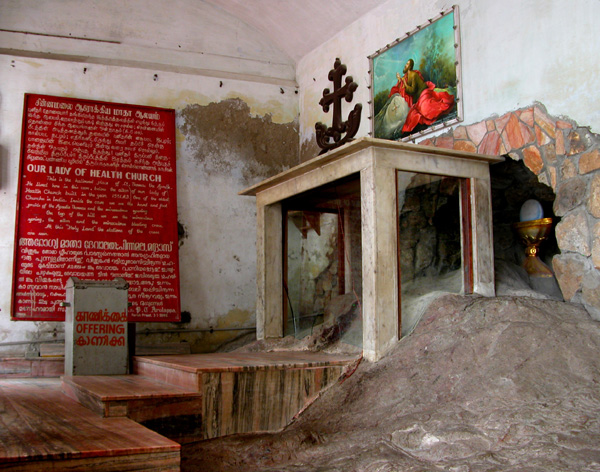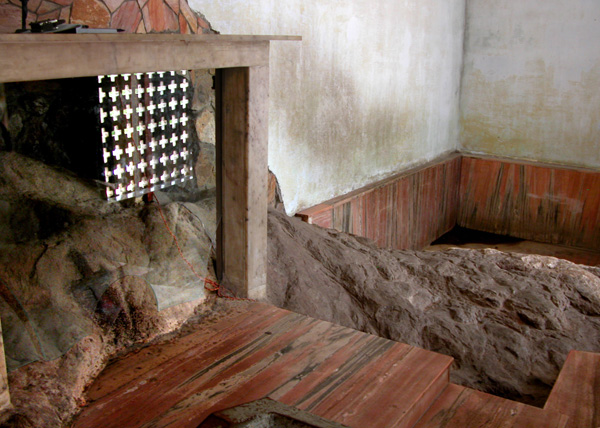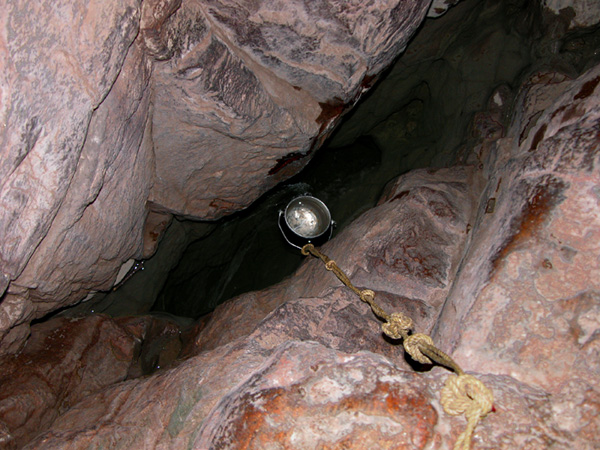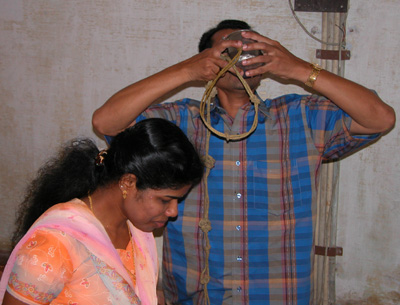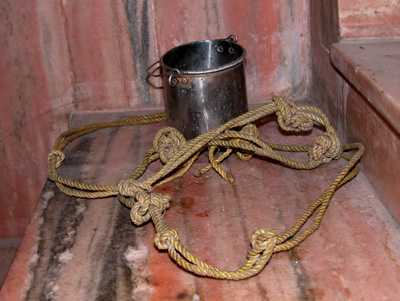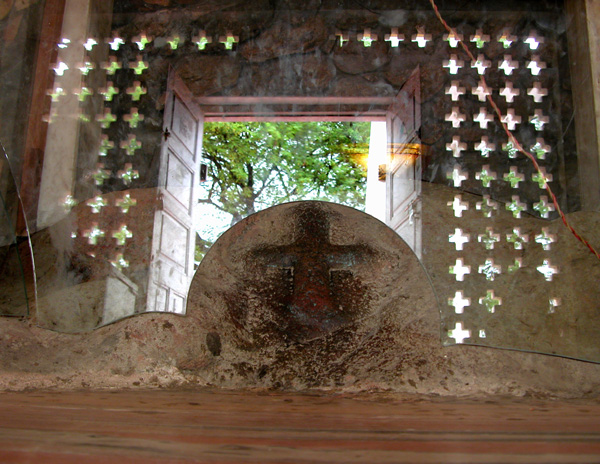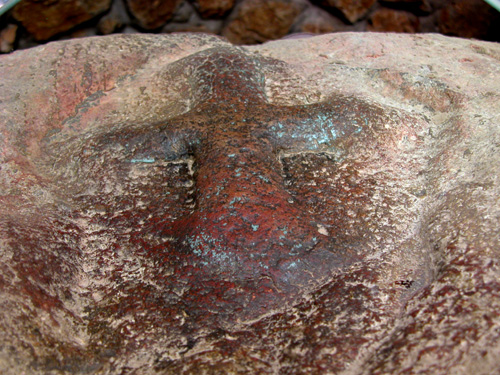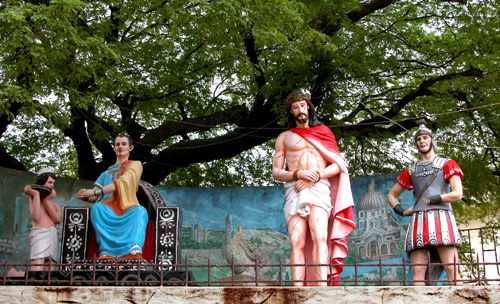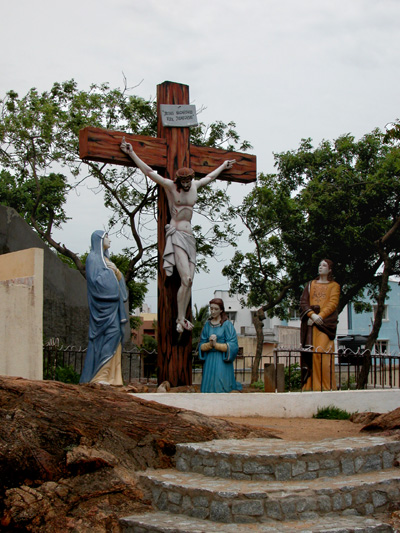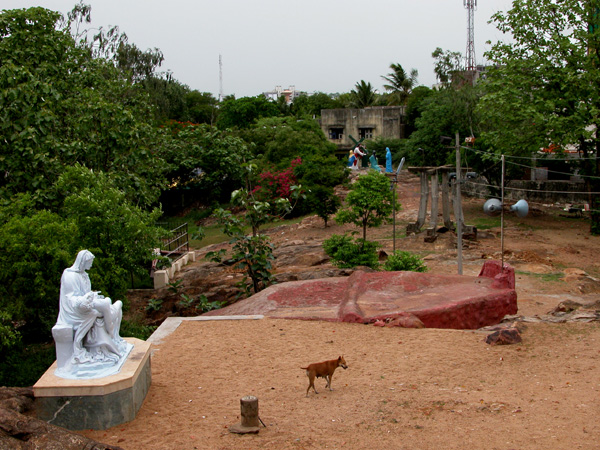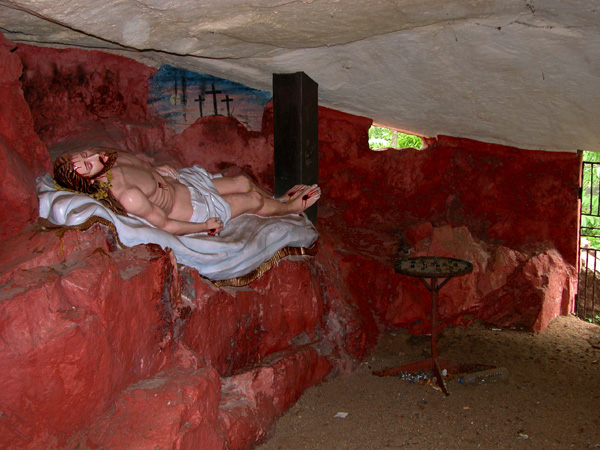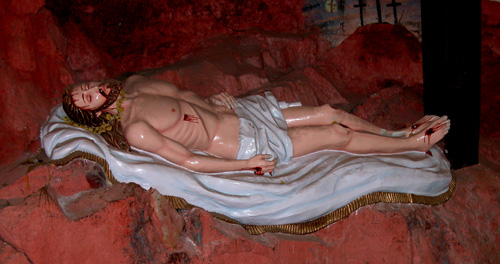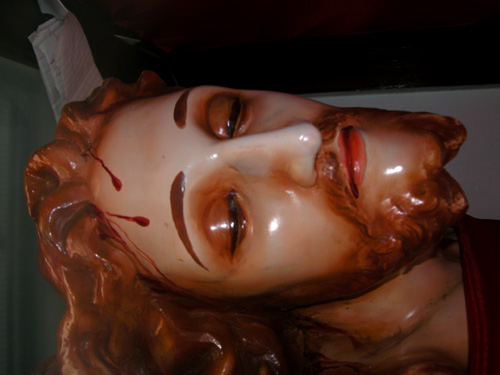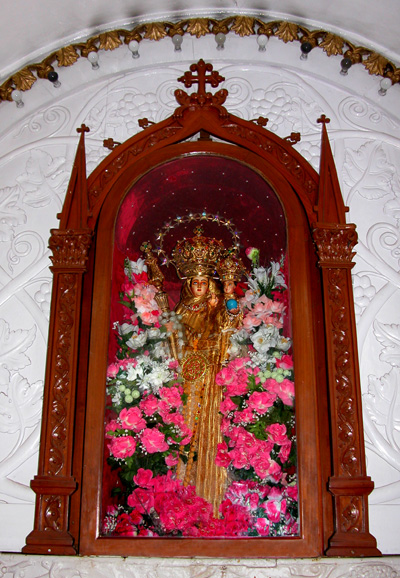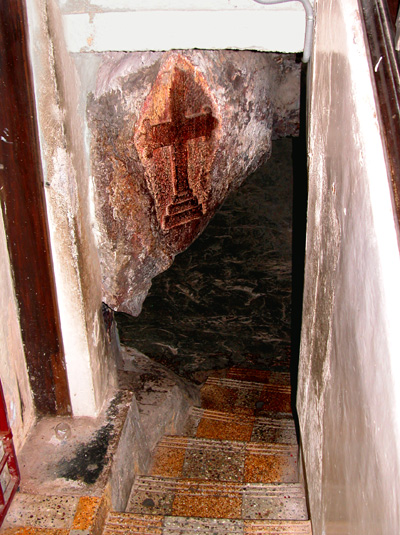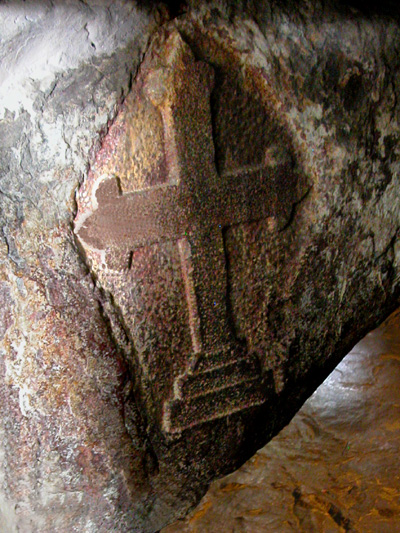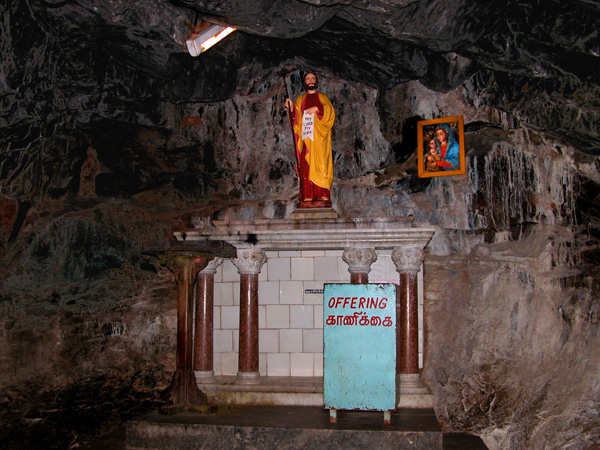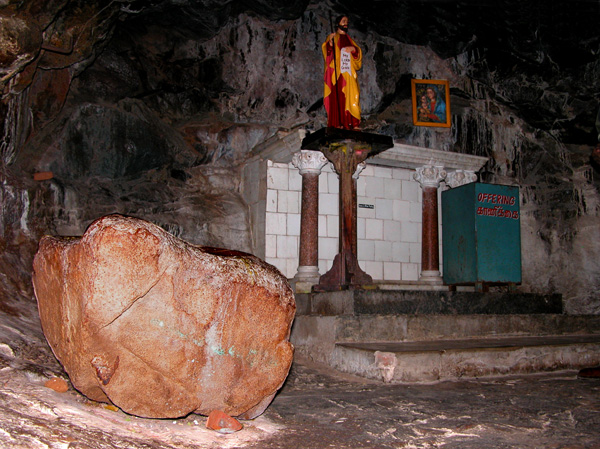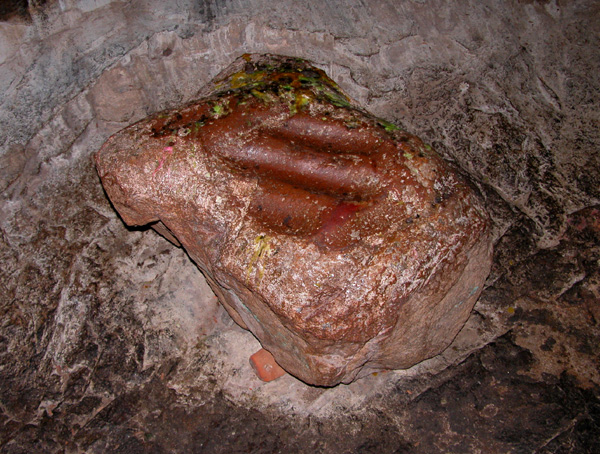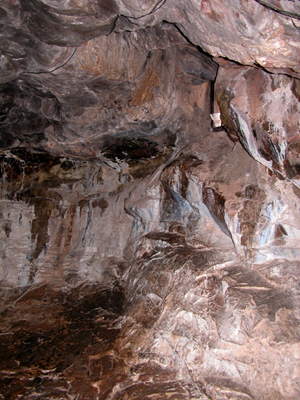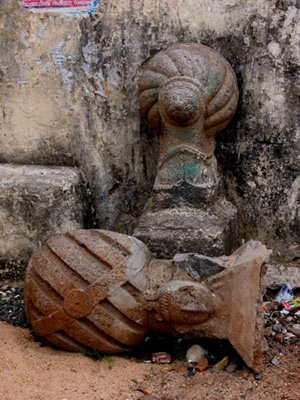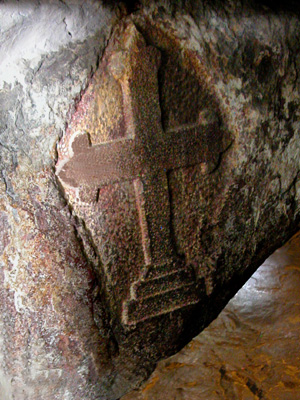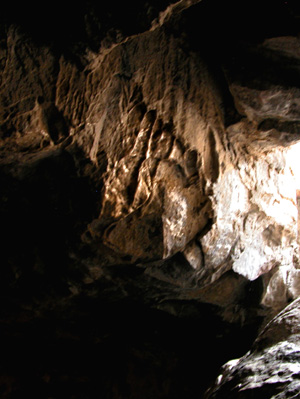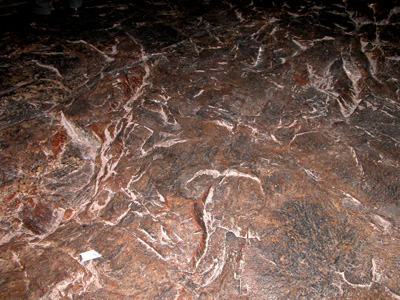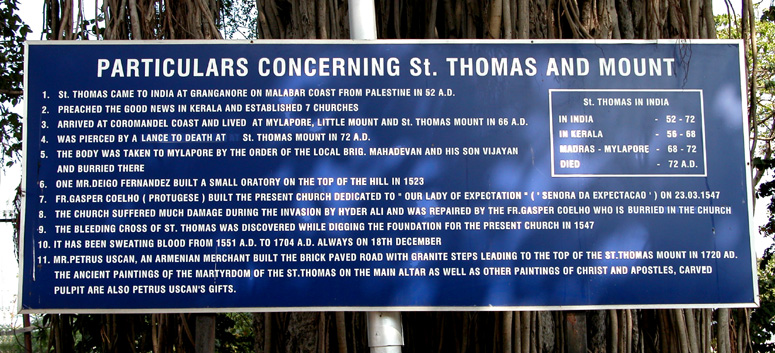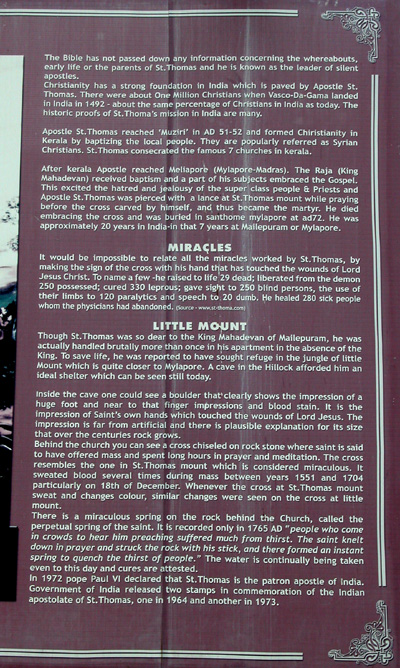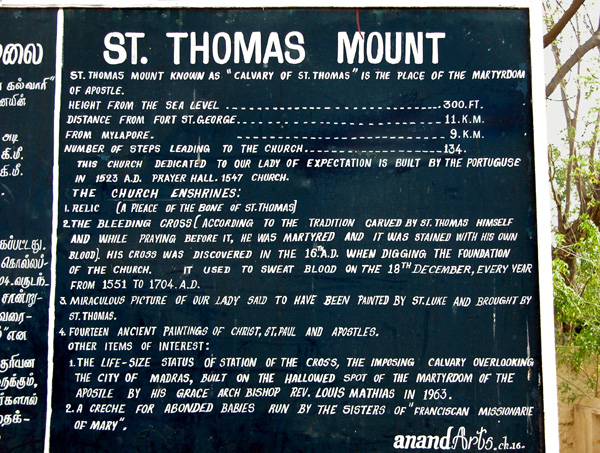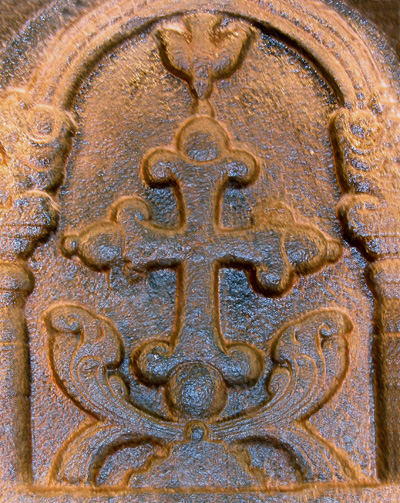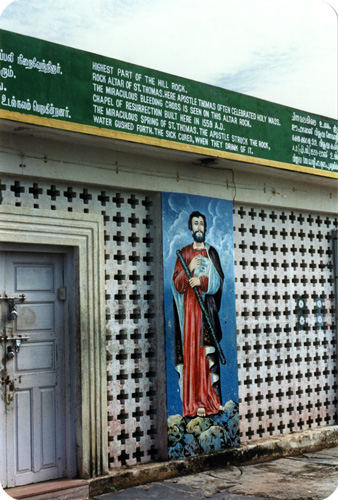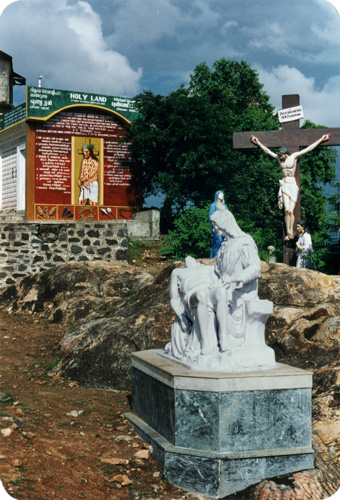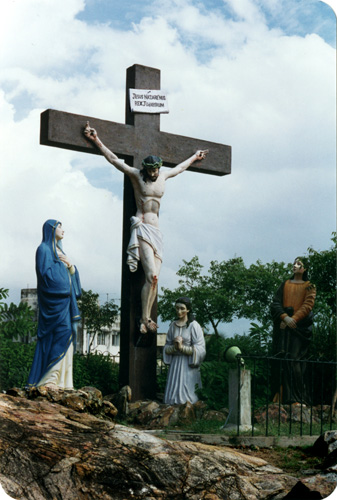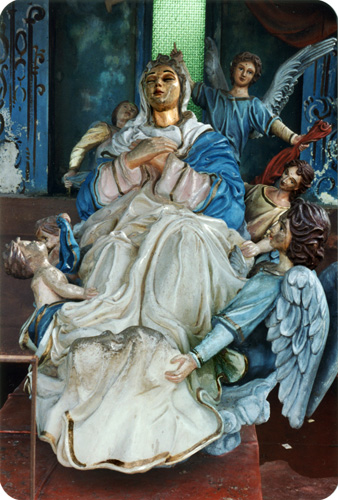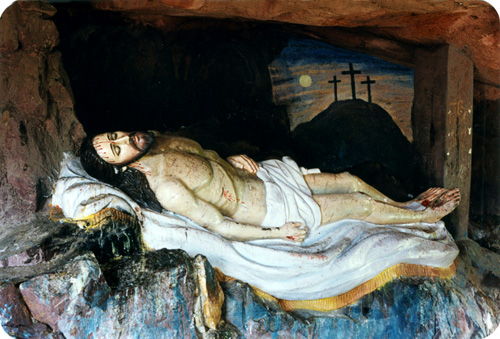|
|
Little Mount Thomas
|
|
|
||
|
Inside at the miraculous spring |
||
|
|
||
Text on
the red sign: "This is the hallowed place of St. Thomas the Apostle. He
lived here in this cave, below the altar of Our Lady of Health Church
built in the year 1551 A.D. One of the oldest Churches in India. Inside
the cave we see the hand and foot print of the Apostle Thomas and the
miraculous opening. |
||
|
||
|
The sufferings of Jesus Christ |
||
|
|
||
|
Inside the Red Cave |
||
|
|
||
|
St. Thomas cave under the church |
||
|
||
|
The Impressions at Little Mount |
||
| St. Thomas has left
behind lasting impressions for generations after generations, of persons
and stones, rocks, with his chisel and hammer and more so with
impressions of his person, even blood itself, as we can see even today
at Little Mount Cave, where he left his foot print, finger print and
blood stains at the altar and at the rocks inside and outside the cave. In those days Little Mount was a jungle of trees and scrubs. Thomas was ever in danger of loosing his life and sought refuge in the cave at Little Mount. Still the cave can be seen. It is about 14 feet broad and 15-16 feet long and 7 feet in its greatest height. One enters with some difficulty through a crevice in the rock. The crevice is about 5 feet height and a little more that 1 1/2 foot broad. |
||
|
Inside the cave |
||
|
|
||
|
Miracles, carvings and a natural cave |
||
|
||
|
Saint Thomas, The Apostle of India |
||
|
It is part of
Indian history that Saint Thomas lived in India's Malabar and Coromandel
Coasts for nearly 20 years. Year 52 AD he, according to tradition, landed in
Muziris, modern-day North Paravur and Kodungallore in Kerala state.
Muziris was an ancient seaport at the Malabar coast and an urban center
in south-western India, that existed from around 1st century.
By preaching the words of Christ to jewish
settlers and locals, he baptized and won several
converts today known as Saint Thomas Christians or Nasranis. He built churches at places like: Palayur, Quilon. Chatil, Cranganur, Parur, Niranom, Kottamangalam. Thereafter he crossed the Western Ghats to the Coromandel Coast. At Little Mount Thomas in Chennai, former called Madras, he lived in a cave for many years. At Big St. Thomas Mount, 72 AD, while praying before the granite cross carved by Thomas himself, he was pierced to death and became a martyr, dying embracing the cross. He was buried at the site of Saint Thome Basilika, at the Marina Beach of Chennai.
In December 18th, 1955, the first
president of the republic of India, Dr. Rajendra Prasad spoke on the
Celebrations of St. Thomas Day in New Delhi: Tradition further tells: St. Thomas, having followed the well established trade routes from the Middle East to the Far East reached India became acquainted with Hubban, a merchant from India, sometimes in the middle of the first century of the Christian era. His apostolate in India is supposed to have begun in the kingdom of Gundaphorus. The ruler asked his guest to built him a palace. But the apostle spent everything that the king had given, to the poor. The king was very angry. He put him in prison. Gad, Guandaphorus' brother died and when brought to life by a miracle, narrated the beauty of the palace, Thomas had built in heaven. The king received baptism together with his brother and the apostle preached the faith all through the country. Several scholars agree that king Gundaphorus really existed and was a king of North India. This is the Indian tradition handed down from generation to generation among the Christians of St. Thomas, and to some extent also among the non-Christian neighbors. The people of Malabar possessed a rich oral tradition, which reflected in their folk songs and even in written annals. Some of this combined tradition is found in the songs; Rubban Pattu, the Veeradyan Pattu, the Margom Kali Pattu and others. In the 16th century, the Portuguese were told of the burial place of the Apostle Thomas, by the natives and others and were taken there by Armenian merchants in the year 1517. From that year onwards, the Portuguese began to settle down in Mylapore. In a few years, they discovered many other places and monuments in the vicinity of Mylapore, such as the Big Mount and the Little Mount. In 1523 they excavated the tomb and found a few relics therein. No other place has put forward a serious claim of possessing the grave of the Apostle. |
||
|
Miracles of Saint Thomas' |
||
| One of the first
miracles that the Apostle performed is said to have been at the temple
tank at Palayur where the Brahmins were having their "Snanam", their
morning bath. Challenged by them to perform a miracle in the water, the
saint is said to have taken some water in his cupped hands and thrown it
into the air. A depression was found in the place from where the water
was scooped out and the drops of water that stood in the air turned into
flowers and fell back into the tank. In the "Acts of Thomas", we also find good many incidents of miracles worked by the saint: The miracle concerning the serpent, the Colt, the Captain, the wild asses, the wife of Misdaeus and Vasan, son of Misdaeus. When S. Francis Xavier landed in Kerala, he came across a very strong Christian population in India and wrote to St. Ignatius Loyola in Rome that he met many Christians in Kerala. |
||
|
The Impressions at Little Mount |
||
| St. Thomas has left
behind lasting impressions for generations to come, of persons
and stones, rocks, with his chisel and hammer and more so with
impressions of his own person, even blood itself, as we can see even today
at Little Mount Cave, where he left his foot print, finger print and
blood stains at the altar and at the rocks inside and outside the cave. In those days Little Mount was a jungle of trees and scrubs. Thomas was ever in danger of loosing his life and sought refuge in the cave at Little Mount. Still the cave can be seen. It is about 14 feet broad and 15-16 feet long and 7 feet in its greatest height. One enters with some difficulty through a crevice in the rock. The crevice is about 5 feet height and a little more that 1 1/2 foot broad.
|
||
|
|
||
|
|
||
|
Inside the cave |
||
|
|
||
|
|
|
Little Mount, december 20th 1994 |
|
|
|
|
|
|
|
St. Thomas in India |
|
Christians probably reached India during the first century
dated from the birth of Jesus Christ. There is strong evidence that one of
Jesus' apostles, Thomas reached India in 52 AD, only 20 years after
the crucifixion of Christ. Thomas settled in Malabar and later expanded his missionary work to China. |
|
Three places related to St. Thomas in Chennai |
|
It is widely believed that Thomas was
martyred in Tamil Nadu on his return to India in 72 AD. He
was, according to the legend, first buried on the San Thome
Beach, Mylapore and a church was built at this site. He was
later moved to a new church further inland. This second
church was rebuilt in 1606 as a cathedral and the present
basilica, Saint Thomas Basilika was built in 1896 on the
same site. a suburb south west of the city center of modern Chennai, formerly known as Madras. Big Mount Thomas, is a small rocky hill just north of Chennai airport. It takes its name from Sct. Thomas and it was here an enemy stabbed Thomas in the back during prayer. Sct. Thomas Basilika, is a church built in Portuguese style by the Thomas Christians. Still there is a strong community of believers in Sct. Thomas in the Chennai area. Before he died at Mylapur, he erected a very large cross and predicted to the people that when the sea would advance to the very foot of that cross, God would send them, from a far distant land, white men who would preach to them the same doctrine he had taught them. This prophesy was verified when the Portuguese arrived in the region , and found the ocean had advanced so far as to be truly at the foot of the cross. At the foot of this cross was a rock where St. Thomas, while praying fevently, suffered his martyrdom by a blow from the lance of a pagan priest. This happened according to the Romas Breviary, at Calamine, whichis in fact Meliapur, for in the language of the people the word Calurmine means on the rock (mina). The name was given the site in memory of the Apostles martyrdom. www.abideinchrist.com/messages/jn20v24.html A serene and beautiful relic-filled church built by the Portuguese stands on top of this 300-foot hillock. Pope John Paul II visited St. Thomas Mount on February 5th 1986. |
|
Links to websites on St. Thomas |
|
www.santhomechurch.com/ - the official website of the
Thomas Basilika |
|
Other pages on Early Christianity in Kashmir, India on this website: |
|
Rozabal, Srinagar - The tomb of Christ? |
|
mukti4u2@gmail.com |
www.mukti4u2.dk |
mukti4u2.dk ► created by BP
